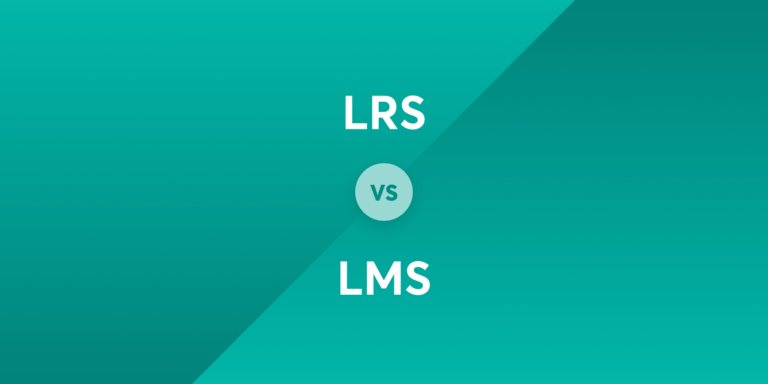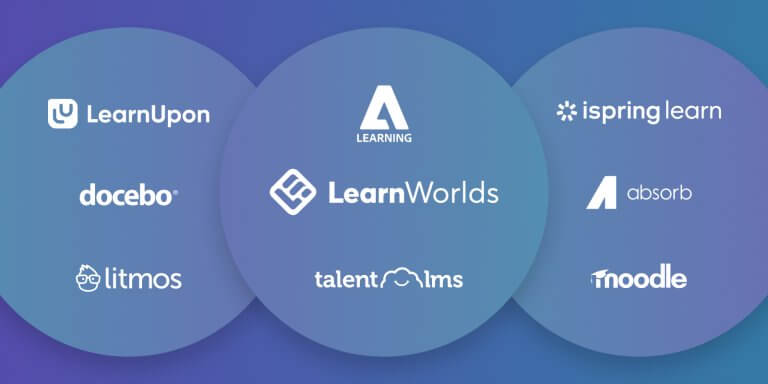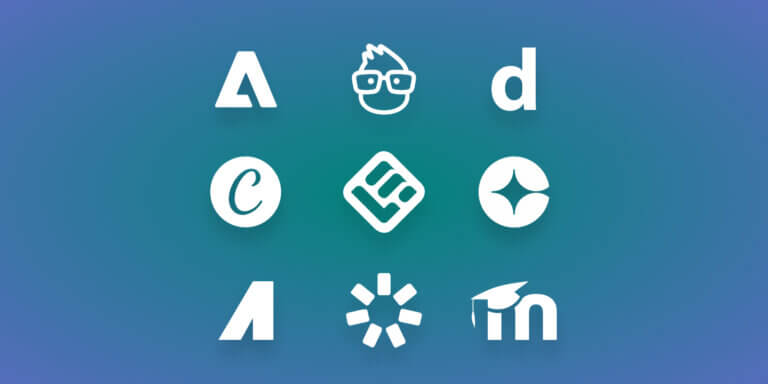Table of Contents
Chances are, you already use – or are at least familiar, with learning management systems (LMSs). They’re fantastic tools for managing formal training.
However, learners want more than just structured learning. In fact, one in four employees [1] say they’re looking for more informal, immersive learning opportunities like mentorship, simulations, and real-world practice.
LMSs are still essential, but they don’t always capture this kind of learning. That’s where an LRS comes in. What does LRS stand for? An LRS, meaning Learning Record Store, works alongside your LMS to track learning beyond formal courses.
So, LRS vs LMS: let’s look at what sets them apart and how they can work together.
What is LRS and LMS?
A Learning Management System (LMS) is used to create, deliver, and manage formal training programs. This could include customer onboarding programs, technical training, or courses needed to maintain compliance. Users log in, complete courses, and are assessed on their progress within the platform.
A Learning Record Store (LRS) retrieves, collects, and stores learning records. These records could come from your LMS or other sources like mobile apps, simulations, or even coaching sessions. While an LRS doesn’t deliver training content, it can be used to capture data about learning as it happens, and where it happens.
It’s tricky to compare an LRS vs LMS without using terms like xAPI and SCORM, so let’s take a second to cover what those are.
SCORM (Sharable Content Object Reference Model) packages elearning content so it can be launched and tracked in an LMS. It records completions, time spent, and scores.
xAPI (Experience API), also known as Tin Can API, tracks learning activity across systems. Unlike SCORM, xAPI collects data from both inside and outside the LMS. Learning Record Stores are built to store this data.
LMSs use native reporting features to track and manage learning data, while LRSs primarily function as data libraries.
Both help track learning, but they’re used differently depending on what and where people learn.
What is an LMS used for?
An LMS:
What is an LRS used for?
An LRS:
An LRS can communicate with other LRSs to transfer learning records efficiently. That makes it easier to share learning records across systems and see what’s actually working in your training programs.
The main difference between a Learning Record Store vs Learning Management System? LMSs manage training, and LRSs track learning in and out of the classroom.
How does an LMS work?

With an LMS, you assign training to learners based on their role, and then track their progress as they complete each course.
Courses can be:
As learners complete training, the LMS tracks progress and updates reports. Admins can pull this data to monitor status and compliance.
💁🏻Looking for an LMS? Check out the best learning management systems in the market.
How does an LRS work?

An LRS (meaning Learning Record Store) gathers data from any tool that supports xAPI. When a learning event happens, it’s recorded as an xAPI statement using the format: actor-verb-object.
For example:
“Amin completed Sales Essentials.”
“Rashida viewed Safety Training.”
These statements describe what a learner did and can be used consistently between tools and learning systems that support xAPI, like your LMS. They can be sent from a wide range of sources or even logged manually. The LRS stores these records in a standardized format so you can easily use them for analysis and reporting.
Collecting learning data from multiple sources
Tracking learner data with LRSs goes past course completions to include informal learning moments. Because xAPI works across tools, it can track xAPI statements from multiple sources like:
If you count it as learning, there’s a good chance the LRS can track it.
We added an LRS at a company where people used Slack channels, YouTube tutorials, and external docs to learn. The LMS showed 80% completion rates, but the LRS revealed most real learning happened outside the platform. One insight: a low-rated internal course had poor engagement, but learners were sharing an external blog post that explained it better. That helped us improve content based on actual behavior
Storing and analyzing learning experiences
After data is collected, the LRS organizes it so you can review and analyze what’s been learned. The xAPI ecosystem plays a big part here, with the LRS acting as a central component that processes and manages learning data. This can show you how learning happens over time and gives insight you can use to:
This LRS integration excelled in showcasing behaviors around specific learning modules, identifying areas where learners either struggled or showed great interest. For a CDL training program I supported, integrating LRS helped us notice repeated interactions with content on road safety, indicating a possible gap in understanding among learners. This insight allowed us to refine training materials, improving the overall confidence and success rates of trainees.”
LMS vs LRS: Key differences
Both systems support learning but serve different roles. These key differences are clearest in the context of formal and informal learning, so let’s pinpoint those definitions before we move on.
Formal learning is structured and assigned, like courses or workshops.
Informal learning happens more naturally, like asking a colleague or reading on your own.
With that in mind, here’s how LMSs and LRSs differ: LRSs track a variety of learning experiences and provide insights into not only training effectiveness but also how learning correlates with on-the-job performance. This lets organizations optimize training programs and improve overall learner outcomes.
Learning vs. result tracking
An LMS is designed to assign and deliver training content, and then track completion and assessment results from activity that happens within the LMS. An LRS tracks the results of learning activities, including formal training and informal experiences like coaching, practice, and self-study.
Formal vs. informal learning
LMSs focus on structured, curriculum-based learning that typically includes predefined goals and assessments. Think of it like a school, with a designated location, predetermined curriculum, teachers, and tests.
LRSs can track the informal learning that happens outside of school (the LMS), such as attending a webinar, watching a tutorial at home, or applying skills in a real-world setting.
Centralized content vs. distributed data
LMSs use centralized content, meaning all training is created, delivered, and tracked within one system. LRSs work with distributed data, collecting learning records from multiple tools and environments outside of just the LMS.
Do LMS and LRS compete or complement?
LMSs and LRSs each have distinct functions, which means they can work to complement each other quite well. The LMS lets you deliver specific content and stay compliant, while the LRS gives you a broader view of what a learner is doing outside of the LMS.
Can you use both together?
Absolutely. Your organization can benefit from using both an LMS and an LRS in tandem. Doing so can help you:
By integrating the LRS with other systems, you can improve training effectiveness and decision-making in learning and development.
Creating a holistic learning ecosystem
The structured training from an LMS combined with the broader learning data from an LRS helps you create a holistic learning ecosystem. With the information you gain from using both, you can better measure learning as it happens and refine your L&D strategies.
Do you need an LRS, an LMS, or both?
What you need will depend on your goals. If you only need to deliver and track formal training, an enterprise LMS might be enough.
But if you also want to track self-study and get a sense of your users’ informal learning experiences, an LRS can help you do that. To figure out whether you need an LRS, LMS, or both, it can help to reflect on your learning needs.
Identifying your learning needs
To figure out your organization’s learning needs, try asking:
If you answered yes to any of these, it might be time to explore more integrated learning technologies. Successful LRS integration with LMSs can give you a more complete view of your learners’ development.
Choosing the right solution for your organization
Some LMSs already have LRS features, but LMSs without can often be paired with a separate LRS. Whether you’re working with an LMS for nonprofits, healthcare, or general education, you’ll want to make sure the platform can support SCORM or xAPI and integrate easily with other tools.
Final thoughts
Both LMSs and LRSs are designed to help you create a better learning experience. An LMS lets you create, deliver, and manage training, and an LRS lets you gather and track informal learning data from outside the LMS.
With an LMS like LearnWorlds plus an LRS, you can follow learning as it happens, whether it’s through formal training or real-world experience.
Start your free trial with LearnWorlds today and explore how flexible learning can benefit your organization.
Sources:
[1] Thriving in the Age of Change: 5 Key Elements of a Successful Learning Culture

Ciera Lamb
Ciera is a freelance content writer and editor connecting companies with their ideal audiences through blog articles and other online content. She approaches her writing with curiosity and research and enjoys the ever-present learning that comes with being a content writer. She is also an avid scuba diver, an aspiring Dutch speaker, and lover of all things nature.
FAQ
Everything you have ever wondered, but where too afraid to ask...




